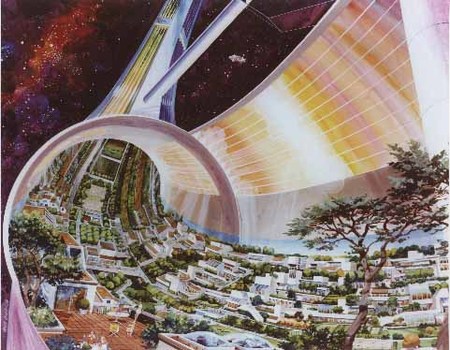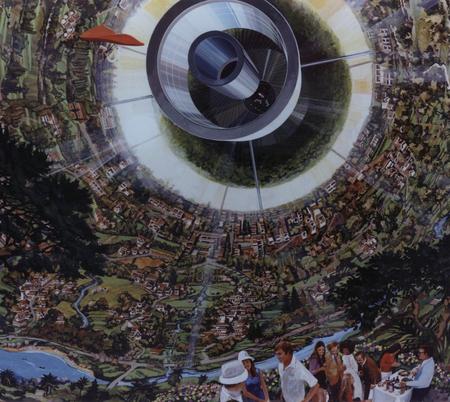“Cutting the space budget really restores my faith in humanity. It eliminates dreams, goals, and ideals and lets us get straight to the business of hate, debauchery, and self-annihilation.”
— Johnny Hart
“Cutting the space budget really restores my faith in humanity. It eliminates dreams, goals, and ideals and lets us get straight to the business of hate, debauchery, and self-annihilation.”
— Johnny Hart
“I’m struck again by the irony that spaceflight – conceived in the cauldron of nationalistic rivalries and hatreds – brings with it a stunning transnational vision. You spend even a little time contemplating the Earth from orbit and the most deeply ingrained nationalisms begin to erode. They seem the squabbles of mites on a plum.”
MTV Music – huge archive of linkable and embeddable music videos. Finally! MTV does something music-related!
Roanoke Robotics Society and Club – We actually have a Robotics club in little ol’ Roanoke? Very surprising! In fact, they are hosting a robotics competition event at our science museum this Saturday. We’re definitely taking Iris to this!
Terrorist ‘tweets’? US Army warns of Twitter dangers – Microblogging: A platform for Jihadists?
Paris Hilton In Space – “Paris Hilton will be among the passengers on Richard Branson’s first Virgin spaceflight.” OK, this article just made space less cool. We send enough junk into space as it is.
Sarah Palin Cabbage Patch dolls. *Wink*

“This image from NASA’s Phoenix Mars Lander’s Optical Microscope shows a strongly magnetic surface which has scavenged particles from within the microscope enclosure before a sample delivery from the lander’s Robotic Arm. The particles correspond to the larger grains seen in fine orange material that makes up most of the soil at the Phoenix site. They vary in color, but are of similar size, about one-tenth of a millimeter.”

“This image from my breakfast table shows a rounded surface containing scavenged puffs of breakfast product known as Trix. These particles correspond to part of this nutritious and delicious breakfast.”
I am always happy when science and food are brought together for the common good.
Sergey and Larry have released an important announcement:
Followup to my previous post about free astronomy podcasts:
The American Astronomical Society just posted a big pile of free audio and video of their astronomy sessions. I can’t wait to listen to these!
I recently finished listening to all of the fascinating lectures in the Silicon Valley Astronomy Lectures series of podcasts. I highly recommend these lectures to anyone that has an interest in astronomy and space exploration. I expected these lectures to be very dry, technical, and boring, but for the most part they were very engaging and directed towards the general public in understandable language. There were some forays into overly obscure technical topics, but overall, the speakers kept things very understandable. And some of them have cool-sounding names, like FRACK-NOY and CROOK-SHANK. The main thing that kept me interested throughout the lectures was feeling the connection to the speakers’ excitement over new space-related discoveries and possibilities. There are just so many awesome space missions going on right now. I felt like a kid again, poring through library books about space, marveling at the explorations of the universe. Yet, it is already 2008 and there are STILL no space colonies (ISS doesn’t count), despite the ambitious claims made by most of the space books from my youth. This cuts me deep. Real deep. *Sniff*.


Oh, groovy 1970s artist renditions of space colonies, why did you never become real?
Nevertheless, the topics of current research and exploration were very interesting. Some examples:



“The past does not exist. There are only infinite renderings of it.”
– Ryszard Kapuscinski, in his book Travels With Herodotus.
Maybe if we keep looking, we’ll eventually see a reflection of a permutation of ourselves, distorted in the endless funhouse mirrors we continue to find as we peer in our vast universe…
Go forth and listen to the lectures for more amazing topics!
P.S.: Here is a bad physics joke told during one of the lectures:
Heisenberg’s uncertainty principle, developed in 1927, states that the simultaneous determination of two paired quantities, for example the position and momentum of a particle, has an unavoidable uncertainty. Some people suspect that when he came up with this principle, Heisenberg may have been having problems with his love life: When he had the time, he didn’t have the energy. And when he had the position, he didn’t have the momentum.
I just saw an awesome video about computer simulations being used for scientific research and visualization.
It is an incredible look at how computer simulations are helping us reveal even more of our amazing universe. Click the montage of screencaps to see the video. Or, here’s a direct download link.